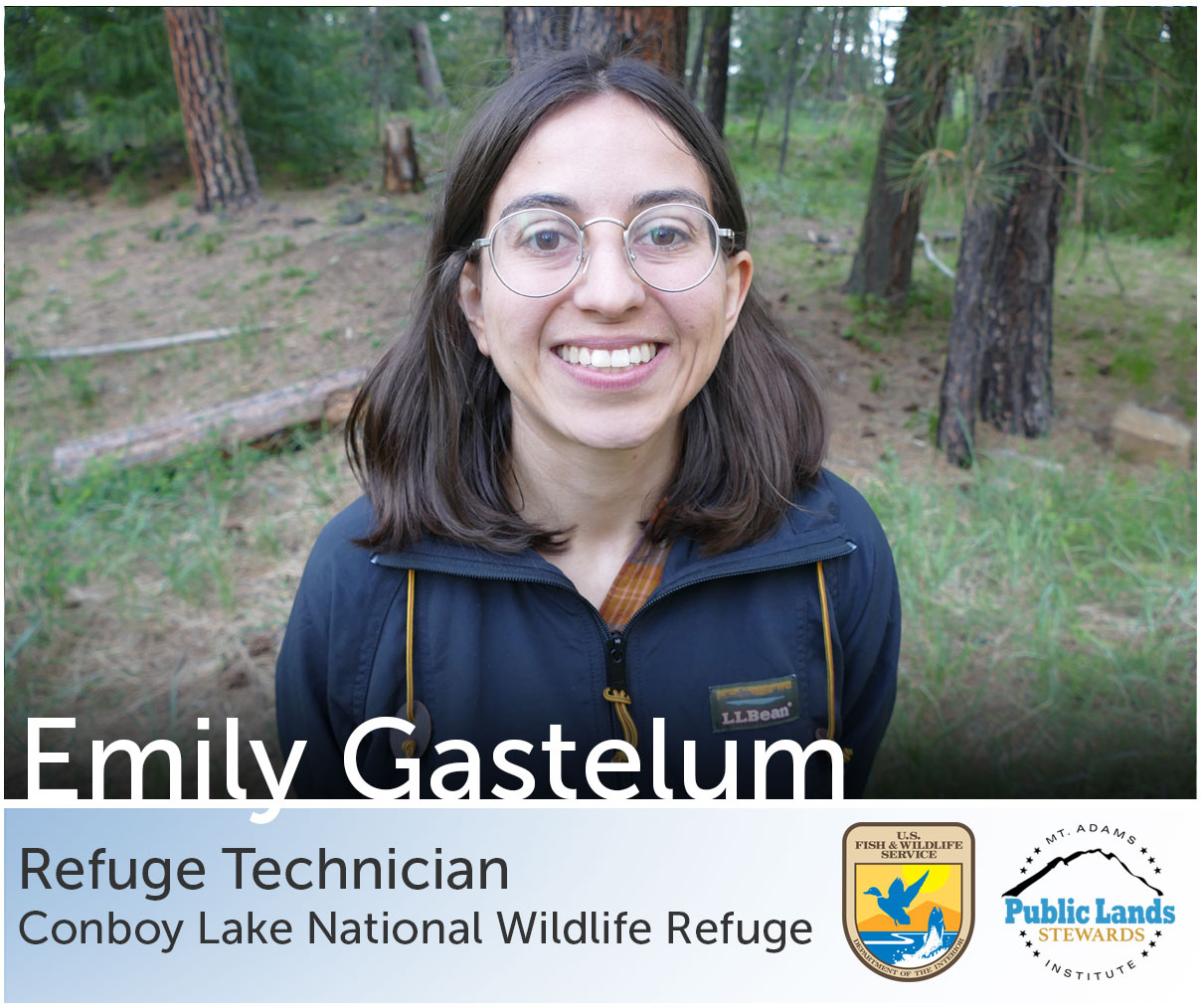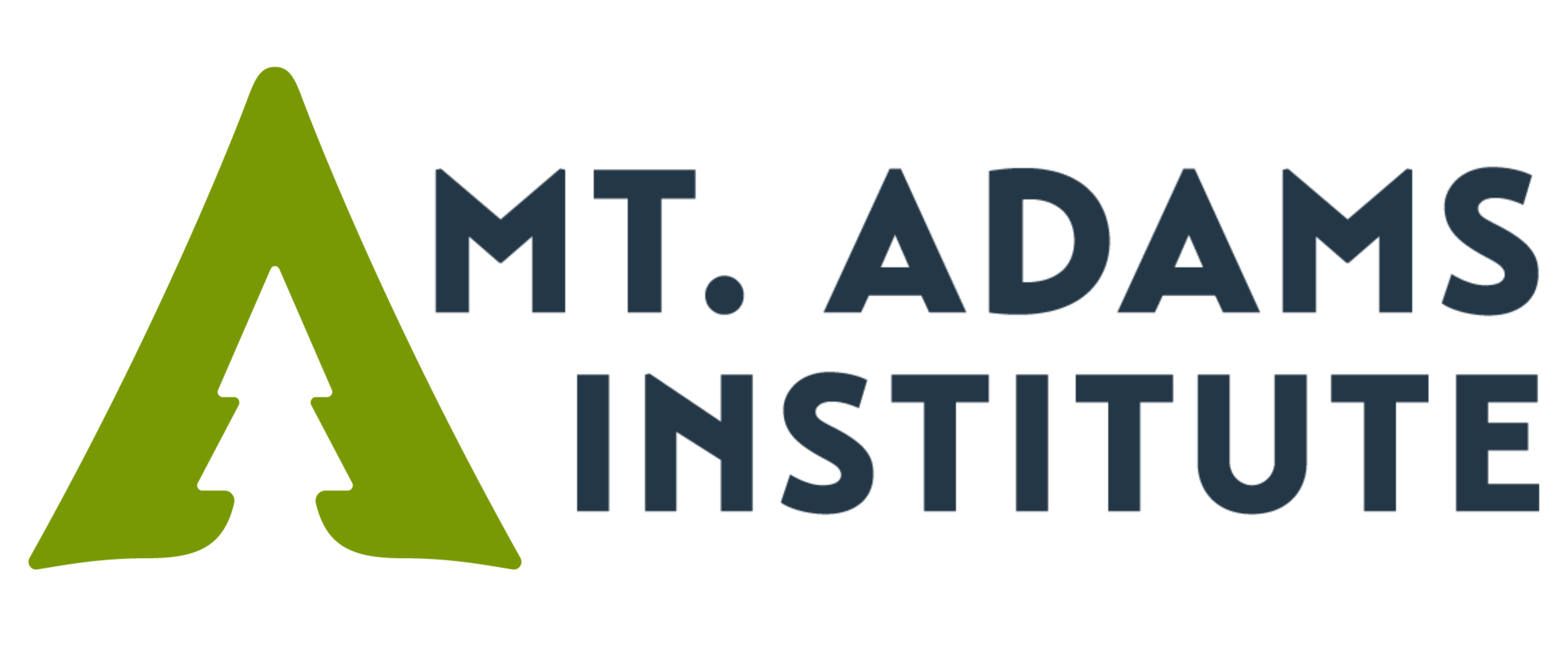
I’m writing this as I wait for the sun to go down so that Hannah, my AmeriCorps partner, and I can begin our nighttime bullfrog hunt. I’d really like to use a better word than hunt, say survey or monitoring, but hunting for all intensive purposes is what we do. Guiding our way with headlamps, we sneak up on unsuspecting frogs and swiftly snatch them with our hands out of the water and into a cooler where later they meet their end in a bath of “sleepy water”. Now, before the image gets too dark, we don’t always win and frankly I’m convinced the frogs are onto us… I can hear them laugh as they balk and hop away at the sight of a couple sleepy eyed Public Lands Stewards in oversized waders. This might not be the most scientifically sound observation I’ve made during my time here at Conboy Lake National Wildlife Refuge but it sure does entertain while I’m knee deep in wetland muck at 12:30am wondering how the frogs continue to delude us.
This isn’t the most glamorous work but it is a large part of what we do here on the refuge in addition to setting nets to catch invasive bullheaded catfish. Many people ask if it’s hard to capture and dispose of thousands of fish and frogs every day. This is something I struggled to answer at first, but the longer I’m here the more time I’ve had to think about our purpose as refuge technicians and here are some of my thoughts so far.
The primary idea I’ve had to get used to is while Conboy Lake is a wildlife refuge, it is by no means untouched land. Before it was established as an official national wildlife refuge in 1965, European settlers developed the land and diverted water into canals for agriculture and dairy farming for almost 150 years thus largely altering the landscape from its original form. It was sometime during these years that families from the southern US stocked bullfrogs and bullheaded catfish in order to feel more at home in the Pacific Northwest. Unfortunately we reap the consequences of this uninhibited land use today and it is only by our hands that we can begin to mediate the effects and hope to restore the ecosystem to a semblance of what it was. So no, I don’t necessarily enjoy the daily eradication of fish and frogs but I do understand that if left untouched, Conboy Lake would lose much of its native habitat and wildlife to these invasive species. This would not only be a loss for people who visit the refuge for wildlife viewing but also for the surrounding communities who still rely on the land to support their livelihoods. My first hand experience as a refuge technician has emphasized that we live in an interesting time where we must accept that as permanent fixtures in these “wild” landscapes, our interference with nature is inevitable and use this new environmental consciousness to refocus our land use in a conservative and restorative manner.
It’s easy to lose sight of these greater intentions while moving through our daily tasks especially when we spend hours counting thousands of fish only to go out later that day to find the canals covered with swarms of catfish fry. This leads me to another important take away from my first two months at the refuge: nature works on a different time scale and patience is oh so important when working as a wildlife biologist. A patient lifestyle is something that I have little experience in having been raised in Southern California and then spending the last 8 years in Portland, OR.
Everything takes time here. The closest grocery store is 40 minutes away, its takes two hours to set 5 nets because we can’t go more than 15 mph on the refuge’s dirt roads, and we may have to sit in the dark car for an hour before we hear the illusive flammulated owl hoot. My days are no longer structured by set work times and traffic patterns, instead the landscape and its animals determine when and at what pace we work. We’re often postponing or completely changing work plans because the weather is too cold or windy, the frogs aren’t appearing as usual or the roads are too muddy to access. Eventually, we finish the tasks we set out to do but it’s not always in a timely manner. I’ve found the best way to keep myself motivated is to harness my patience more than I ever have before and remember to apply that patience to the larger picture as well. Just like the neighboring farmers wait to hay their fields until the endangered Oregon Spotted Frogs and Sandhill Cranes have had space to breed we are all at the whims of nature’s own time scale up here at Conboy Lake National Wildlife Refuge. While it is the ultimate goal, we very well may never see the complete extermination of bullfrogs and catfish, but I will remain patient in waiting to see how much we can at least alleviate some of the negative impacts with the work we’re doing today.
These are just a couple of main points I’ve landed on while being an AmeriCorps Public Lands Steward so far. I’m lucky to have the support of a great Conboy crew who are constantly encouraging self-reflective conversations about the work we do. It’s rare to work among a group of diverse people who are so inclined to assess their impact and place in the environment around them and I can say that this has made my experience way more fulfilling than I could have imagined at the start. I can’t wait to see where the land, the wildlife, the roads, the water and the rest of summer take us from here.

